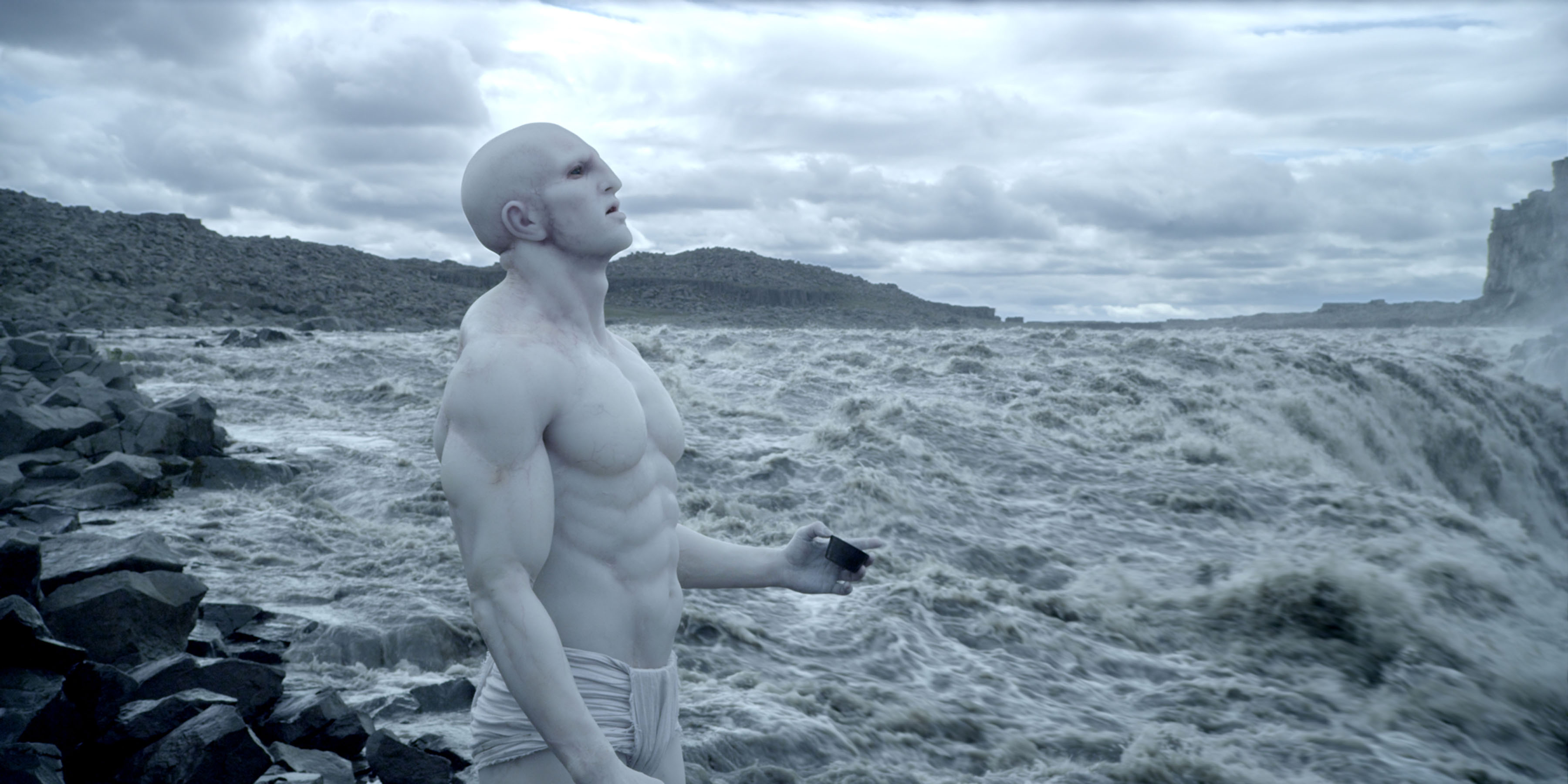Where did we come from? This is quite possibly the most sought-after
question in human existence. How did we as human beings come about, who
made us, and why? In director Ridley Scott's Prometheus, we just might find the answer. In the film, we are told that a small crew of inquisitive scientists board the spaceship Prometheus and lurch themselves into a distant world of the unknown. The goal is to follow a star map, one discovered from a certain ancient human culture, and consequently pinpoint the origins of humanity itself.
Because we as human beings wonder about our existence, the movie is completely logical. Some might deem that a spaceship traveling to another planet might not be; however, as a viewer the world is so easy to get lost in that it does indeed feel genuine. Logos says that we can be persuaded through the use of reasoning. In the film, there are so many elements pulling indifferent directions, that at times I admit it's easy to get confused between the lines of logical vs illogical. Within all of the talk about androids and aliens, though, the central theme of the plot is really the creation question: Who Am I? This question uses Prometheus, the titan of Greek mythology, as an answer. The film compares superior beings to humanity, and wrestles with the idea of relationship between human and god. This is why the film's logos is so strong! Whether we're religious or not, scientific or not, believe in aliens or not, we all deal with the creation question because we are all created. And we had to be created by something.
The special effects in the film are overall quite extraordinary. The atmosphere, the spaceships, and all of the alien creatures contribute to the success of the film. There are a lot of special effects, yes, but most of the landscape and structures are real. Scott says himself that he "tried to use as much reality as possible" in his effects. His design team used digital 3D models only to insert CGI where necessary. This is awesome just because there are countless films that over-use CGI just to try and make money; and Prometheus is not one of them. There is much credibility to be found throughout. For instance, the design team took actual rock samples from filming locations in Iceland, in order to better match them up with digital geographical textures. Also, NASA directly suggested some of the ideas for how space vehicles would be represented. Because the director wanted his world to be as real as possibly imaginable, he went to great lengths to ensure that the ethos of the film was convincing to his audience.
Even though the director did try to use as many true-to-life elements as he could, he does take advantage of digital elements, too. On many occasions he uses these elements to enhance the credibility of the movie's setting, and remove imperfections to make them seem authentic. "In the past, often whole scenes had to be re-shot because of technical glitches. For example, if a modern building or auto appeared in a period film, the scene had to be re-cut or even re-photographed. Today, such details can be removed digitally. So can a microphone that accidentally dips into the frame. Even the sweat on an actor's face can be effaced by an F/X technician." (Gianetti 33)There are several scenes in the movie involving these types of digital techniques. One example the snake-like alien creature known as the Hammerpede. In the creation of the Hammerpede, a simple puppet was used to simulate all of its movements. After the scene was shot, elements of both CGI and other practical special effects were added. The wires controlling the puppet were digitally removed, to give the alien a realistic feel, and add some truly creepy characteristics.
Below is the Hammerpede attacking a member of the Prometheus crew. The fact that they were able to give this creature such a realistic feel made the scene that much more horrific.
Throughout the film, there are several instances where characters are interacting with computer-fashioned characters. "Some critics have complained that such acting is often cold and mechanical, with none of the human subtleties that can be found in scenes where performers are actually interacting." (Gianetti 34) However, in Prometheus, it is completely the opposite. I would argue that characters were even more emotional when having to interact with CGI-generated characters! In the film, Weta Digital used certain CGI sub-surface scattering algorithms for "digital doubles" enabling them to perfectly match live action actors. This gives their movements more flow. We as the audience can see and feel the sorrow and confusion felt by even the CGI characters. Weta Digital also "got slabs of silicon and carved vein patterns into them and pumped through oils and inks with a heartbeat motion through the silicon." This gives the characters life, and allows us to see and empathize with times when they are tired, or in pain. The cold, gloomy atmosphere of the planet creates a dreadful tone that amplifies each and every character's emotion. The pathos of the film is outstanding, and viewers can see this fact through the alien "engineer's" body language, pictured below.
I give Prometheus 4 pickles for the effectual use of all three appeals. The pathos and logos were amazing in the film. Logos was confusing at times, which is why I deducted 1 pickle.





No comments:
Post a Comment